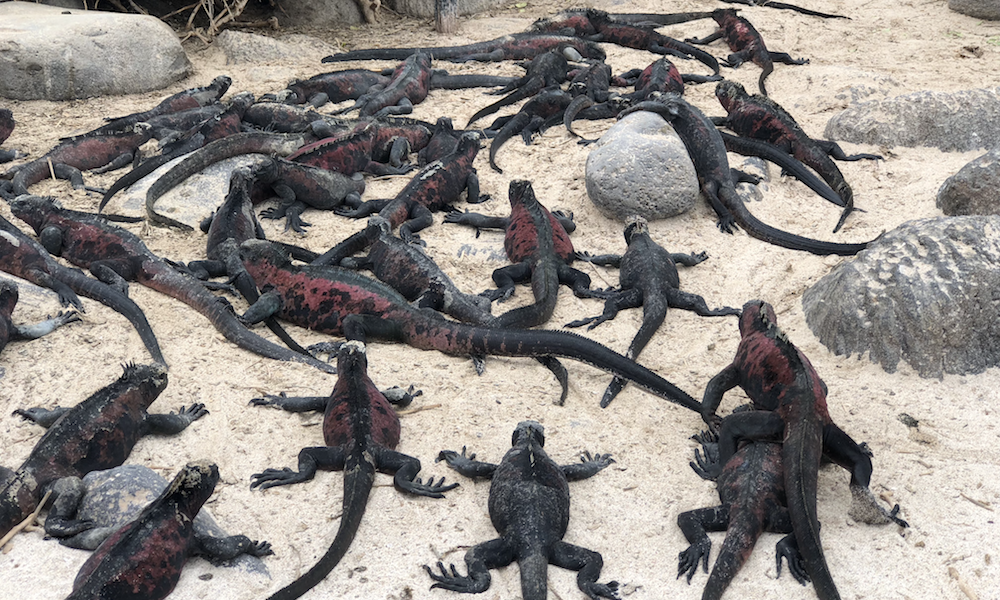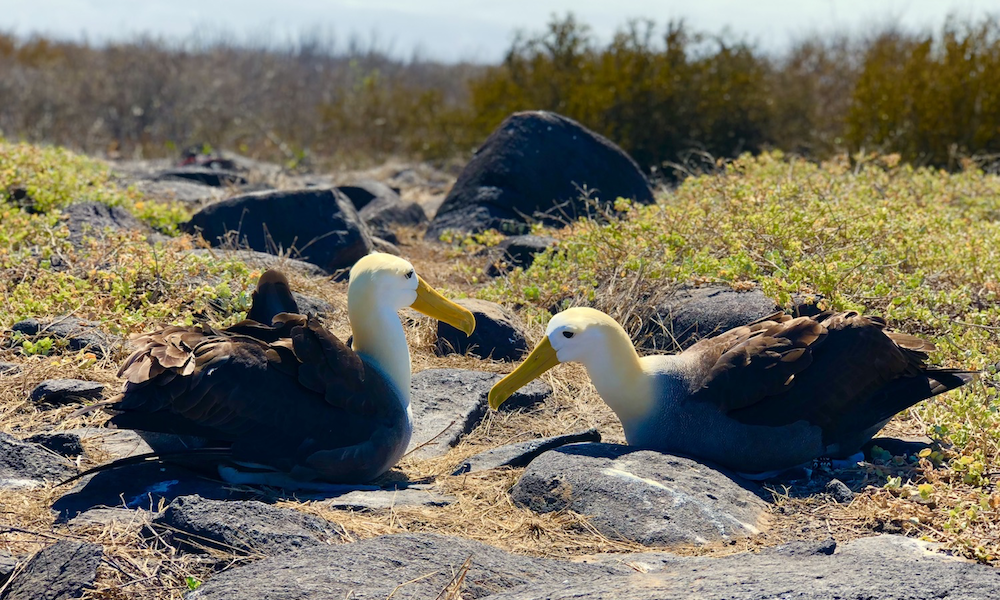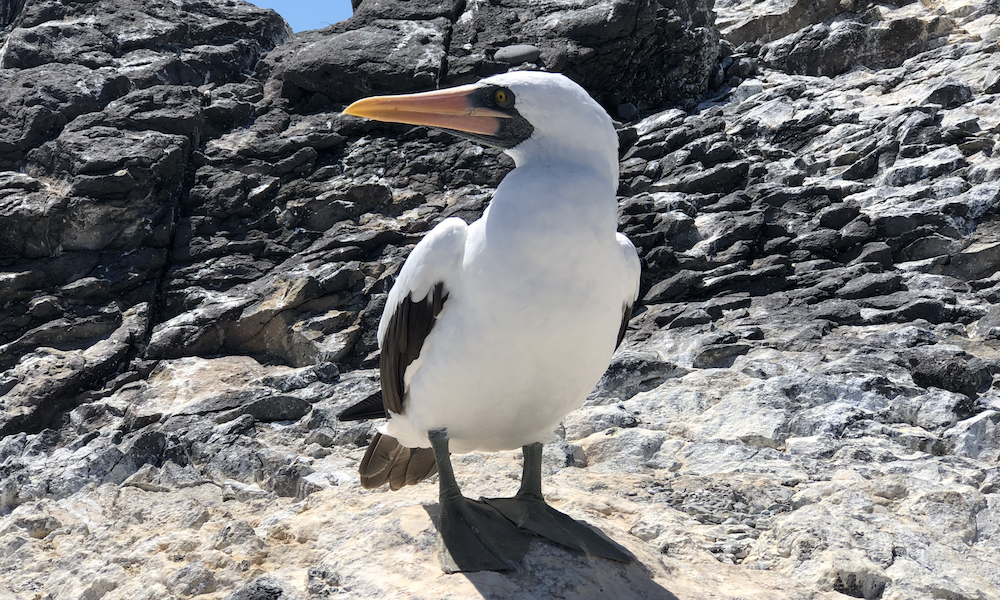Quick Overview
Highlights: Blue footed boobies, nesting albatrosses, galapagos hawk..
Maximal group size: 12
Full Day 7am - 5pm, only Thursdays and Saturdays

1 x snorkel or 1x dive at Gardner Islet Española
Snorkelling Gear / Diving Gear and Towels are provided by us.

One hike at Punta Suarez Española for approxiametly 1h, Difficulty: easy, closed shoes recommended

We provide lunch for you. We have vegetarian, fish or meat options, please let us know which are your preferences

Snacks and none-alcoholic drinks like: tea, coffee, coke, water are included
The Charter for Diving and Snorkel Groups, we do 2 dives, one at low Gardner and the second at Gardner Islet, Check for costs.
Details
The Spanish island (or Hood, in honor to the British admiral Samuel Hood) is, with 60 km ², one of the smaller that form the Ecuadorian archipelago of the Galapagos islands. It is the oldest of all, with about 300 million years of existence. Uninhabited, there live several animal species of interest, such as the endemic mockingbird of Hispaniola, the Galapagos dove, the Galapagos Gull, the marine iguana, albatross and pinnipeds.
Two places are especially popular with visitors: Gardner Bay, which has a beach renowned for its beauty, and Punta Suarez, of interest for its variety of birds.
Gardner Islet is the most beautiful in all of Galapagos. It is home to many colonies of sea lions and turquoise water makes a beautiful contrast with white sand consisting of shell dust. On the rocks are mixed large marine iguanas and zayapas.
Cucuves fight for their territory and inspect the backpacks of tourists. About 50 m from the shore is a rock where you can find tropical fish and rays while doing surface diving. But more spectacular is the Gardner Rock that can be reached with a panga. This is home to white-fin reef sharks and other colorful sea-dwellers very popular among divers.
Punta Suarez is located on the west end of the island. The tourist trail is about 2 km long and goes from one end of the island to the other while revealing the spectacular life of the birds. There are many blue footed boobies nesting, you should be careful not to step on one of their nests (depending on season). You can observe red marine iguanas that are spread in the sun or the buzzards on the top of the trees. They hunt juvenile blue-footed boobies. Following the path you can find masked boobies that are nesting almost all year round on the cliffs.
The culmination of the tour is undoubtedly the colony of Galapagos albatrosses, which are endemic to this island, finding them nowhere else on the islands or in the world. In the middle of March and the end of December there are around 12,000 of these fascinating birds with wings of about 2.40 m. On the cliffs they seem to be really uncomfortable but when they fly they are the kings of the sky.
A very short distance from the colony of albatross is the Hollow Blower. This is a water source up to 20m (50-75 feet) high that has been created by the waves. All the energy is pressed through a small hole between the cliff. The phenomenon resembles a geyser.




